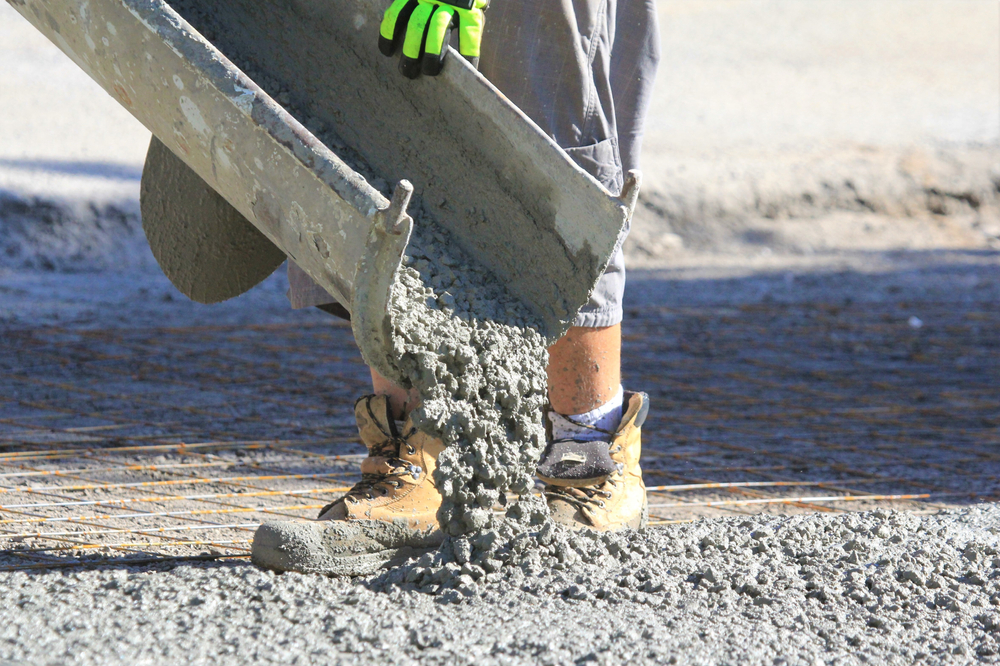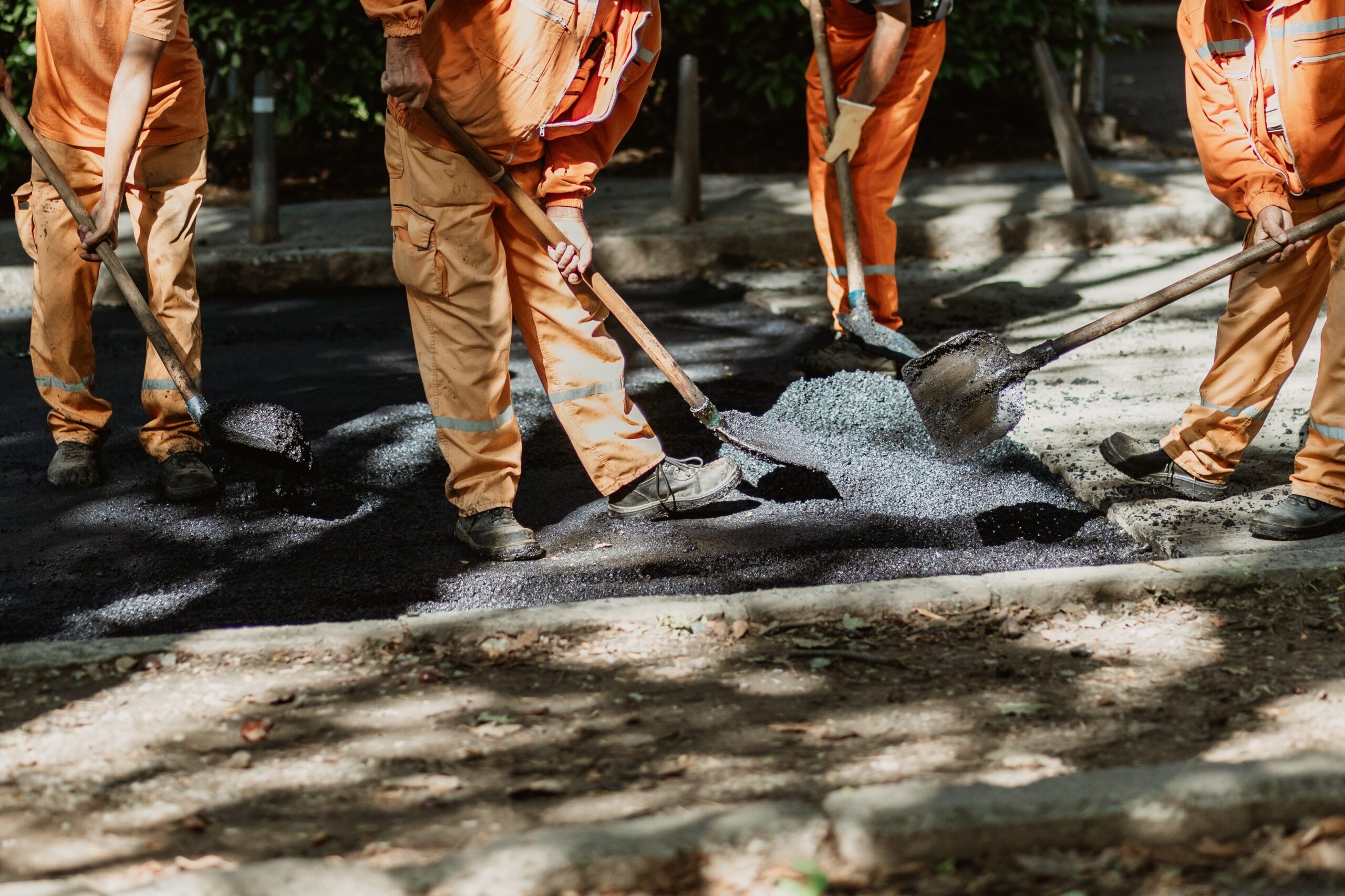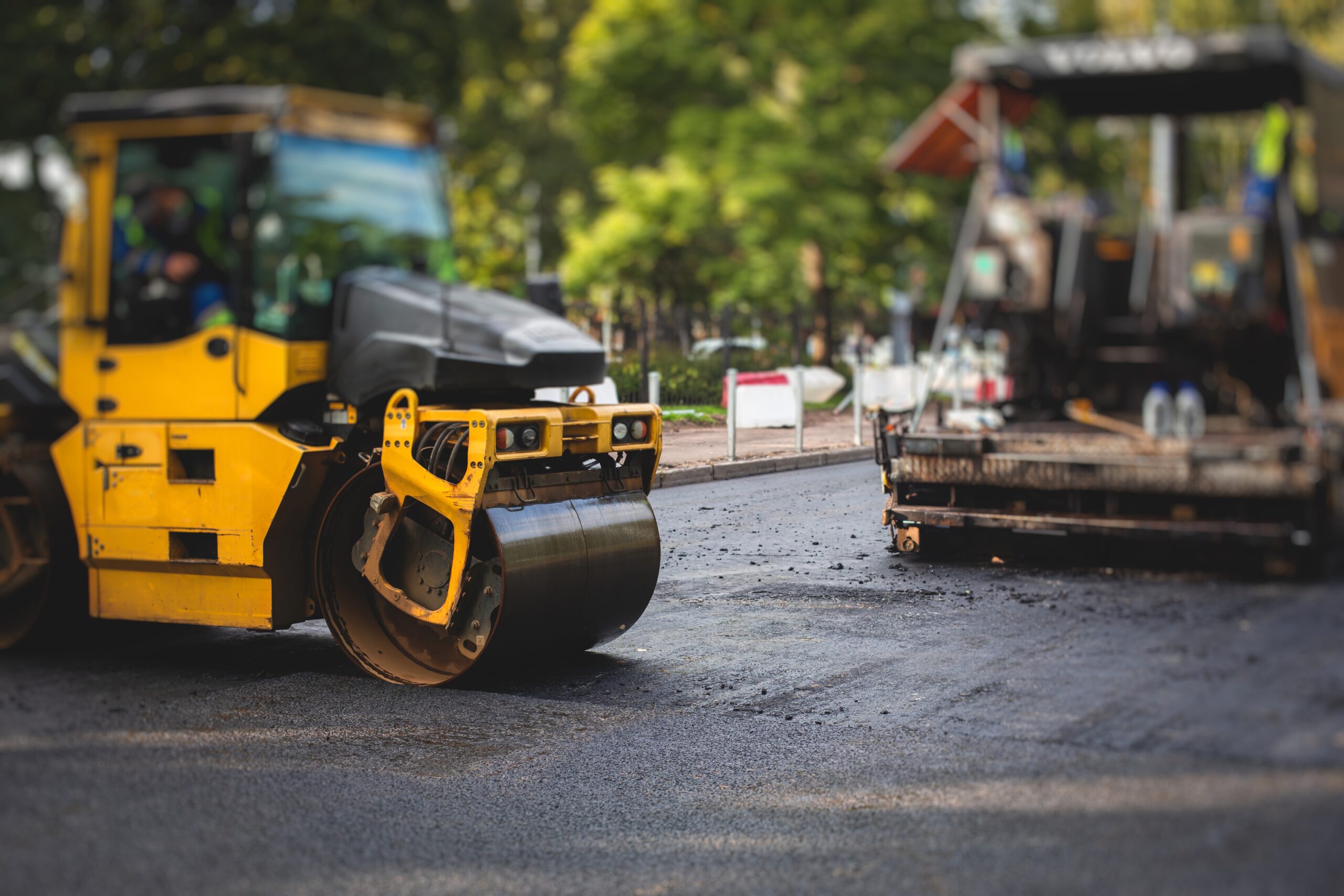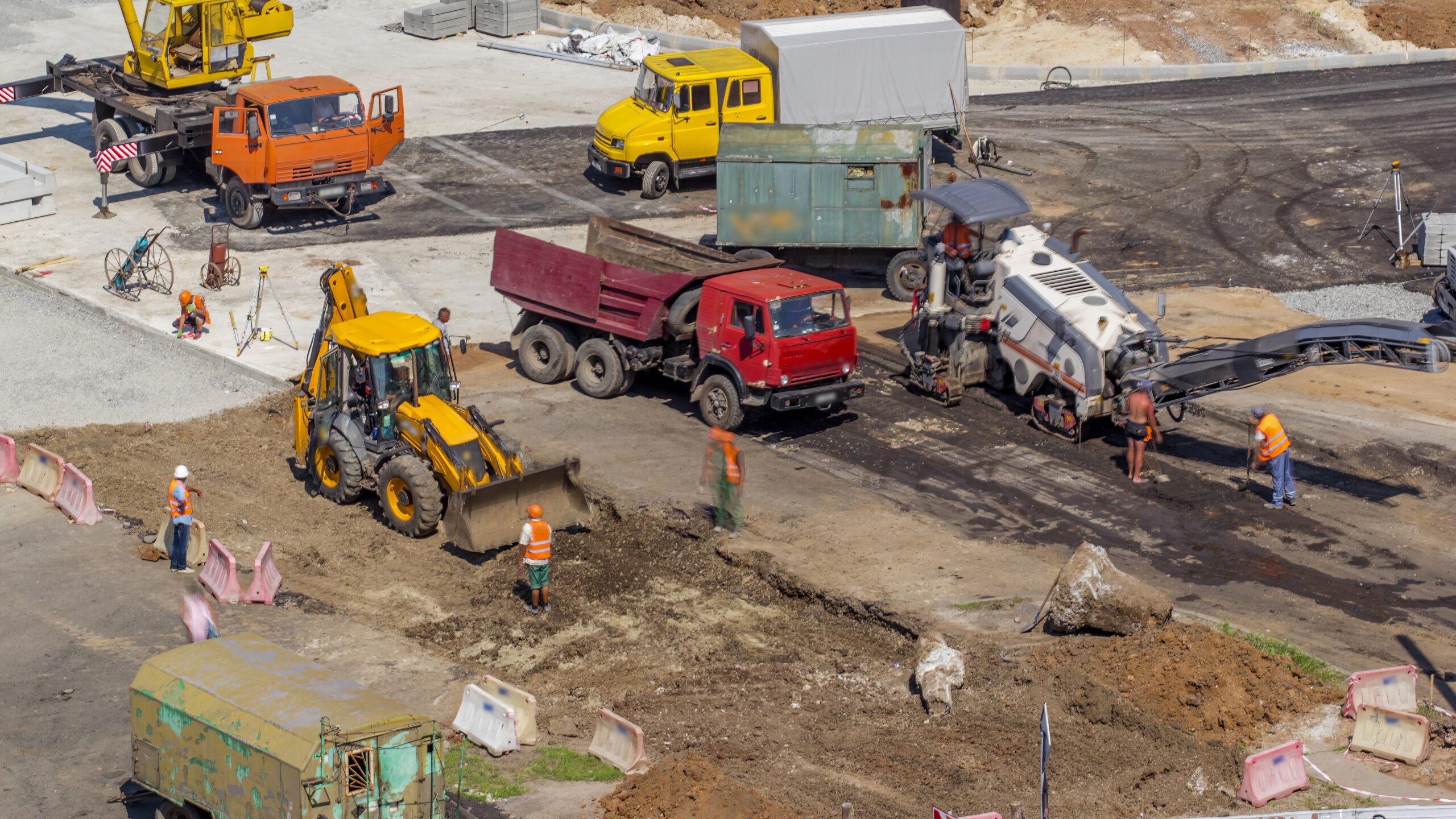
Uneven concrete may seem like a minor nuisance at first glance, but for commercial property owners, it’s often a ticking time bomb. Whether caused by tree roots, weather, or poor installation, surface irregularities can pose severe safety risks, open the door to costly lawsuits, and lead to expensive emergency repairs.
Identifying and correcting these issues early isn’t just smart, it’s critical. Here’s what every property manager, facilities director, and business owner needs to know about the hidden dangers beneath their feet, including the dangers of ignoring small cracks in asphalt.
What Causes Uneven Concrete?
Understanding why concrete shifts or sinks is the first step toward preventing this issue.
Subsurface Movement and Structural Failure
Several underlying factors contribute to the formation of uneven concrete on commercial properties:
- Tree Root Intrusion: Nearby tree roots can lift slabs as they grow, resulting in dangerous protrusions.
- Poor Soil Compaction: When the subgrade isn’t adequately compacted, the slab may settle unevenly over time.
- Water Erosion: Improper drainage or pooling water can cause the soil beneath the slab to wash away, resulting in the slab sinking.
- Expansion Joint Failure: Damaged or poorly sealed joints can lead to slab movement and misalignment.
- Subgrade Shifts: Over time, natural soil settlement or voids can cause slabs to tilt or crack.
These causes aren’t always immediately visible but often develop slowly until the damage becomes impossible to ignore.
Seasonal & Climate Triggers
Your concrete’s greatest enemy might be the weather you can’t control, but you can plan for it.
Freeze-thaw cycles and Water Intrusion
Colorado’s seasonal extremes, from snow-packed winters to dry, scorching summers—can accelerate concrete deterioration:
- Freeze-Thaw Cycles: During colder months, moisture within the concrete freezes and expands, resulting in cracking and surface upheaval.
- Heavy Rainfall: Sudden downpours can saturate the ground, weaken subgrade stability, and contribute to slab movement or washouts.
- Thermal Expansion: During hot spells, concrete expands. Without properly spaced joints, this can lead to buckling or misalignment.
- Improper Drainage: Flat grading or blocked drains often result in standing water, which erodes the soil beneath concrete slabs.
By accounting for these regional weather patterns in your maintenance strategy, you can extend surface life and reduce costly damage, which helps clarify the best time to sealcoat your commercial parking lot.
Safety Hazards & Legal Liabilities
What starts as a minor dip or crack can quickly escalate into a legal and financial nightmare.
Trip Hazards and Lawsuit Exposure
Uneven concrete in high-traffic areas like walkways, loading zones, and parking lots increases the risk of:
- Slip and Fall Injuries: Raised or sunken slabs become hidden tripping hazards, especially at night or during rain.
- ADA Violations: Non-compliant walking surfaces can lead to fines or forced remediation under accessibility laws.
- Insurance Liability: A single injury claim could lead to increased premiums or denied coverage.
- Premises Liability Lawsuits: Property owners may be held liable for negligence if they fail to repair known trip hazards that pose a risk to others.
Ignoring these risks not only threatens lives but also invites litigation and reputational damage.
Regulations & Compliance in Commercial Properties
Meeting safety standards isn’t optional; it’s a legal requirement.
Building Code and ADA Surface Requirements
Commercial concrete must meet specific codes and regulations, including:
- ADA Slope Ratios: Walkways can’t exceed a 1:12 slope without handrails or other accommodations.
- Permit Requirements: Many municipalities require inspection and permitting before making surface modifications.
- Municipal Guidelines: Local governments may enforce stricter concrete maintenance standards in business zones.
- Detectable Warning Surfaces: High-contrast texturing may be required near curbs, crosswalks, or entries.
- Inspection Records: Documentation of inspections and repairs may be required for liability protection.
Keeping your site in compliance not only avoids penalties but also protects your visitors and employees.
Financial & Operational Impact
Delaying repairs can cost more than you think, and not just in dollars.
Comparing Emergency Costs vs. Proactive Repairs
Many commercial clients learn the hard way that ignoring uneven concrete leads to larger financial headaches:
| Factor | Emergency Repair | Proactive Repair |
| Downtime | Unplanned (days) | Scheduled (hours) |
| Repair Cost | 2–3x markup | Standard rate |
| Legal Risk | Active liability | Minimal liability |
| ADA/Insurance Penalties | Likely | Avoided |
| Long-Term Surface Life | 5–7 years (avg.) | 10–15 years (avg.) |
Proactive maintenance pays for itself in business continuity, compliance, and cost control.
How Asphalt Coatings Company Solves It
No two commercial properties are the same, which is why our repair methods are tailored and proven to be effective. This helps in deciding when to overlay vs replace your asphalt surface.
Our Core Services for Uneven Concrete Repair
Asphalt Coatings Company specializes in a range of services to restore concrete integrity, including:
- Polyurethane Foam Leveling: Fast, clean slab lifting using expanding foam injection.
- Slab Jacking: Traditional cementitious grout injection for deeper voids or heavier slabs.
- Asphalt Overlay: A cost-effective resurfacing option that improves traction and appearance.
- Seal Coating: Protective sealing that prevents water infiltration and extends surface life.
- Warranty Coverage: We stand behind our work with industry-leading warranties on all repairs.
Our certified technicians conduct thorough site inspections before recommending the most effective treatment.
Preventive Maintenance Best Practices
Repairing is one thing, prevention is another. Here’s how to stop uneven concrete before it starts.
Strategies to Maintain a Stable Surface
Adopting a preventative approach helps maintain both aesthetics and structural integrity:
- Annual Site Inspections: Schedule a yearly check with professionals to assess elevation changes and joint wear.
- Root Barrier Installation: Prevent root uplift with targeted root control systems near walkways or slabs.
- Proper Grading & Drainage: Ensure the site slopes away from buildings to reduce pooling and soil erosion.
- Scheduled Sealcoating: Apply sealants every 2–3 years to protect against moisture and chemical damage.
- Compaction Checks: For new builds or resurfacing, insist on proper backfill and soil compaction testing to ensure the integrity of the foundation.
Preventive planning significantly reduces the frequency of repairs and total ownership costs.
Advanced Repair Technologies Explained
Today’s repair options are faster, more accurate, and less disruptive than ever before.
High-Tech Fixes for Uneven Concrete
We utilize industry-leading equipment and digital tools to deliver consistent, long-lasting results:
- Polyurethane Foam Injection: Expands beneath the slab to fill voids and lift with pinpoint precision.
- Laser-Guided Overlay Systems: Ensure optimal surface leveling during overlays or full-depth repairs.
- 3D Scanning & Digital Mapping: Evaluate elevation changes and problem areas with photogrammetry tools.
- IoT Surface Sensors: Monitor slab health in real-time, enabling predictive maintenance.
- Intelligent Diagnostics: Combine GPS, imaging, and historical weather data for targeted interventions.
These technologies reduce guesswork, save time, and deliver higher ROI for commercial property owners.
Frequently Asked Questions
What are the signs that my concrete is becoming uneven?
Look for pooling water, visible cracks, shifting joints, or height differences between adjacent slabs.
How often should commercial concrete be inspected?
At least once a year, especially after extreme weather seasons like monsoons or dry spells.
Can uneven concrete affect building drainage?
Yes, it can alter water flow, leading to ponding near foundations and potentially causing structural damage.
Is it safe to operate forklifts or heavy equipment on uneven slabs?
No. Irregular surfaces can damage equipment, cause product spills, and increase the risk of worker injury.
Are temporary fixes like patching recommended?
Patching may mask the problem, but it won’t address the underlying issue. Long-term solutions, such as leveling, are more effective.
Ready to Fix Your Concrete Issues? Let’s Get to Work
Uneven concrete is more than just an eyesore—it’s a silent threat to your business’s safety, compliance, and reputation. Whether you manage a retail complex, warehouse, hospital, or educational facility, addressing concrete hazards promptly helps you avoid lawsuits, injuries, and costly repairs. Asphalt Coatings Company brings local expertise, advanced equipment, and proven results to every project.
Our team is standing by to inspect your site and provide a custom quote. Schedule your free inspection today and see why businesses across Colorado trust us to keep their properties safe, compliant, and operational.



